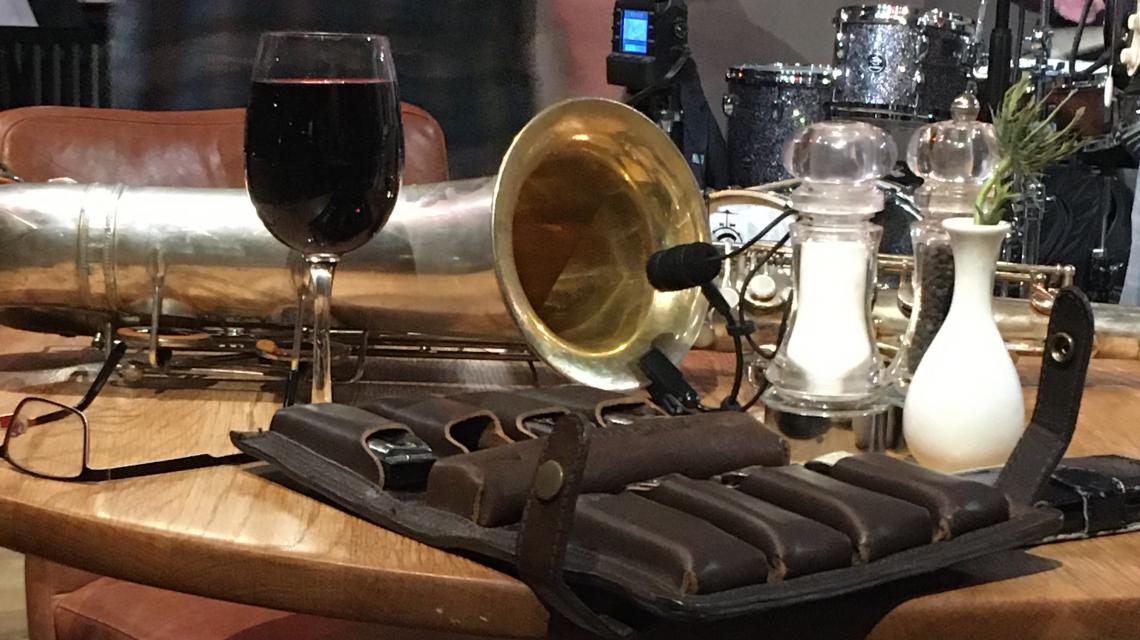Musical intuition meets the blues
8 February 2021

As regular readers will have read previously in this erratic chronicle (you can take alliteration too far. Ed.), I’ve really enjoyed playing solo over the last couple of years. But one of the things I miss is that wonderful unspoken intuition that so often sparks between musicians flying by the seat of their pants.
Before the pandemic, I managed to get my fix once a month at a Blues jam in an Edinburgh pub. The Blues, as a musical form, works well in this context: it’s relatively simple to play and it’s been around for almost a hundred years. Its vigorous roots nourished jazz, soul, rock, folk, country, world and even pop music for decades. The downside is that, although we’ve all grown up knowing how to play a twelve bar blues and have taken that knowledge for granted, most of us don’t really know that much about its history, legacy or canon. For some, the Blues was a journey of exploration and discovery, from the Ivory Coast to Mississippi to Chicago, from slavery and exploitation to entrepreneurialism and... well, exploitation. But for most of us (growing up in the UK in the fraying tail of the 20th century), Blues was Rock n’ Roll slowed down a bit with a nod to what the Americans coined the British Invasion.
Anyway, at the Blues Jam musicians turned up, put their names on a list and were randomly called to make up a four or five piece band and play two or three tunes - usually selected by the one doing the singing. Then, after some shuffling and switching of mics and amps, the next five would step up and perform. And so on.
In my case, I was called up after a couple (noun: approximation of quantity, normally meaning four or five) of pints to play guitar with a bassist, drummer, blues harp, pianist and singer.
As we all fiddled with jackplugs and tuners and drum sticks, the singer turned and said, “Do yous ken Ramblin’ On My Mind?” There was a general shuffling and grunting. It was fairly obvious that no-one had heard of it.
“It’s by Robert Johnson.”
Shrugs and maybe a sideways glance. Of course, anyone who knows anything about the Blues, knows that Robert Johnson was the Grand Daddy. He was the guy who sold his actual soul to the actual devil at the actual Crossroads. He died at the age of 27 in 1938, but his music inspired the British Blues Boom in the sixties, which shaped Rock music across the world through the seventies and eighties.
“It’s in E.”
Ah. Well, now we’re talking. This bunch of middle-aged white Scots are on solid ground now, we can do E - even the drummer can do E! The singer counts out four and we strike up a tentative blues shuffle. In E. Personally, I’m fairly sure I’ve never heard Ramblin’ on my Mind in my life. But I can have a go at a blues shuffle.
The singer launches into the first verse. Now we can start to get a feel for the song. By the second verse you can tell we’ve begun to find our place. A little spark is zapping around the cramped stage. Then the singer points at the harp player. It’s time for the solos.
Ah, the solos! It’s a peculiar feature of this musical genre that it requires its performers to launch into individual, extemporised expressions of passion and skill through their instruments at the drop of a hat. It can even get quite competitive. Historically, this is why Jazz happened. There are books on the subject, if you’re interested.
The harp player honks and squeals, sooks and blaws. It’s exciting stuff and by now the band have really tightened up. The musicians are listening to each other. The drummer is pounding the kick drum where the bass player is hitting those root notes. The keyboard player is leaving gaps for my rhythm guitar to poke through. And suddenly the singer is pointing at me for the next solo!
I’ve no idea what I played, or if it was any good, but I managed to get through it and then it was the pianist’s turn. They’re flashy blighters pianists, aren’t they? Meanwhile, the bass, drums and guitar are locked in and building up the power. We’re not rambling, we’re motoring down that track!
Finally, the singer came back in. And this is where the musical intuition really kicked in. Without signals or nods or glances, without even looking at one another, we piled up the excitement and then, as we came down from the V to IV chord, stopped dead with a stab of choked cymbal and heavy dominant seventh. The singer’s voice soared up through the open space, there was a pause and we all piled in on one last sustained E chord.
The audience started clapping and we looked at each other, slightly sheepishly. Where had that come from? How did we all know that was going to happen? The singer was grinning. He nodded his head in acknowledgement of the praise and, still grinning, turned round to me and spoke through clenched teeth.
“What the f**k happened there! I havenae sang the last verse yet!”

Add new comment